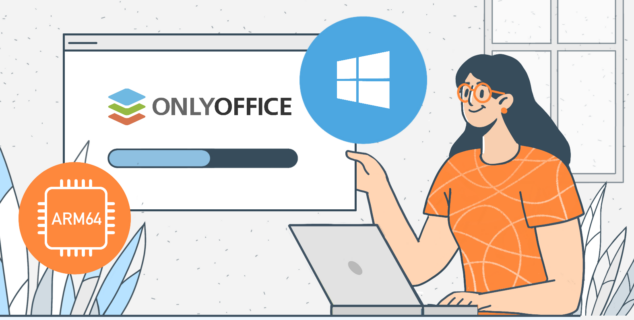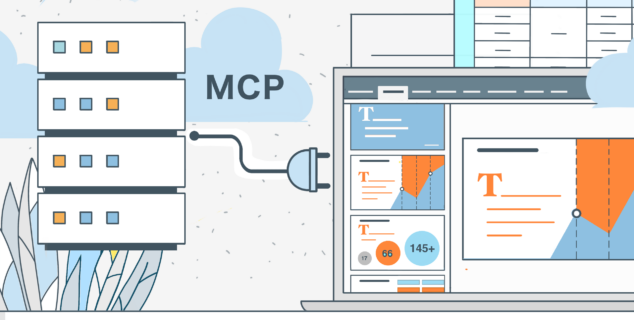PDF vs PDF/A: differences and ways to convert
The PDF/A format is one of the versions of the better-known PDF. Although the two formats are used practically in the same way, PDF/A files have features that make this variant preferable in some specific cases. Read this article to find out how the two formats differ, what they are used for, and how to create and convert from and to PDF/A.
PDFs and PDF/As (which respectively stand for Portable Document Format and Portable Document Format Archive) are file formats developed to ensure that documents will appear the same way they were created, regardless of software or hardware changes.
While PDF was presented by Adobe in 1993, the younger PDF/A format was created in 2005, after that the Association for Information and Image Management (AIIM), the National Printing Equipment Association (NPES) and the US Court’s administrative body called for the creation of a standardized format for documents meant to be stored electronically.
The main difference between the two format lies in the components: while standard PDFs can include elements such as external fonts, external references, multimedia and other objects that might change with time, PDF/As don’t, making this format the ideal choice for documents that are destined to remain unchanged for many years to come.
What are PDF/A files used for?
The idea behind PDF/A is to be able to access documents with future technology as it develops. This format may seem very specific to you, but there are several cases that require precisely this type of file. Let’s look at some examples.
Legal Documents: Legal institutions often require long-term preservation of documents such as contracts, court records, and agreements. PDF/A ensures that these documents remain authentic and accessible over time, regardless of changes in technology.
Government Records: Government agencies frequently archive documents such as regulatory filings, permits, and historical records. This standardized format can preserve the documents, ensuring their integrity and accessibility for future generations.
Medical Records: Healthcare providers need to maintain accurate and accessible records of patient information, medical histories and diagnostic reports. Thanks to PDF/A, these critical documents can meet regulatory requirements and be preserved.
Historical Archives and Academic Works: Libraries, museums, and cultural institutions often digitize historical manuscripts, maps, and photographs for preservation and access. PDF/A makes it possible to maintain digital replicas of rare and fragile materials, ensuring their availability for research. It also allows to keep research papers, academic works and thesis intact. Nowadays some universities and institutions accept papers and works in PDF/A format only, as it accurately displays special characters used in mathematical formulas, old languages’ alphabets and so on.
Corporate Records and Financial Management: Companies need to archive financial reports, contracts, invoices, internal documents for compliance, audit, and historical reference purposes. PDF/A makes the long-term preservation of these records easier. The format also allows embedded electronic signatures.
Differences between PDF/A and PDF
We just saw some cases that require the use of a PDF/A, but how do these files work? What are the features that make this format different from classic PDF?
Font Embedding: PDF/A requires fonts used within the document to be embedded, ensuring that text will display correctly even if the required fonts are not installed on the system viewing the document. Fonts also must be legally embeddable for unlimited and universal rendering. Regular PDFs may not require this, which can lead to display issues if these fonts are not available.
Metadata Preservation: PDF/A requires metadata to be embedded within the document, ensuring that essential information about the document, such as authorship, creation date, and modification history, is preserved. Classic PDFs don’t have to prioritize metadata preservation, and this might lead to potential loss of important information over time.
Color Management: In PDF/As color spaces must be device-independent color spaces, ensuring the exact and predictable color reproduction across different devices and platforms. PDFs may use device-dependent color spaces, which can result in inconsistencies in color rendering.
Multimedia Embedding: While regular PDFs may include multimedia objects, PDF/A restricts the use of these elements such as audio, video, JavaScript and executable files, focusing instead on static content to ensure consistent archival integrity.
LZW Algorithm Absent: LZW (Lempel-Ziv-Welch) is a loss-less data compression algorithm commonly used in various file formats, including early versions of the PDF format. Its use in PDF/A is forbidden due to concerns related to patent issues, compatibility, reliability, and long-term preservation. PDF/A mandates the use of open and standardized compression methods to ensure the integrity, accessibility, and longevity of archived documents.
Types of PDF/A
During the years, different types of PDF/A came out. Let’s have a look at the main characteristics and differences.
- PDF/A-1: Also known as PDF/A Level A, this version based on PDF 1.4 emphasizes visual integrity and content preservation. It prohibits features that may hinder long-term preservation, such as encryption, audio, and video.
- PDF/A-2: It provides greater flexibility while maintaining the focus on archival quality. It also allows the presence of layers, images in JPEG2000 format and advanced electronic signatures.
- PDF/A-3: This version, also based on PDF 1.7, allows the embedding of any file format (including non-PDF/A files) within a PDF/A document, making it suitable for archiving documents that contain non-standard or dynamic content.
Ways to convert from and into PDF/A
You may need to have more control over the PDF/A file and therefore want to convert it into a simple PDF or text document. You might also want to convert an existing file to a PDF/A or create one from scratch.
When it comes to this particular file format, conversion is not always an easy and immediate thing, but luckily there are some instruments and tricks that can help us with this task. Let’s have a look.
Convert PDF to PDF/A
Acrobat
If you are working in Acrobat, once you’ve created or opened your PDF, just follow these easy steps:
- Select Tools, and then click on PDF Standards;
- Click Save As PDF/A;
- Choose where you want to save your PDF/A file.
This method is very quick and easy, but it is available only with a paid subscription to Acrobat Pro.
FreePDFConvert.com
This website provides an easy PDF to PDF/A converter:
- Upload your file;
- Select the type of PDF/A you need;
- Click on Convert and download your file once it is ready.
ONLYOFFICE Desktop Editors
Unlike online converters and Acrobat, where in order to obtain a PDF/A file you must first have created a normal PDF, ONLYOFFICE Desktop Editors allow you to create a PDF/A document from a text document, thus saving you one step.
Click on the File tab, then Save as.

In the window that has just opened choose Portable Document / A (*.pdf) and save.

Your document is ready to be shared or archived!
Convert PDF/A to PDF
Acrobat
Acrobat offers two different methods to transform a PDF/A into a PDF.
- When opening a PDF/A, you will be given the option to modify it. The button “Enable modifications” will show up at the top of the page. Click on the button. Acrobat will warn you with a message, that once modified, the document will no longer conform to the PDF/A format. Click OK. You can do the same by clicking on Preferences in the Menu tab ->Documents -> set “view in PDF/A mode” to “never“.
- From the advanced menu click on Preflight -> Profiles -> PDF/A Compliance -> Remove PDF/A Information.
Notice that, once your file has been converted in Acrobat, you will need a Premium subscription to edit it.
MiniTool PDF Editor
If you want to work offline directly on your computer, you can download MiniTool PDF Editor. This instrument offers many functions, including PDF/A to PDF conversion.
Once you have installed, select the function “PDF/A to PDF” displayed in the left panel, then click Add Files to open the file explorer window and select the file that you want to convert. Now select Open. Click the Start button or the start icon under Options. Now, you can convert PDF/A to PDF successfully. The same function is displayed in the left sidebar or in the toolbar at the top.
You can try the free trial of MiniTool PDF Editor, but if you want to keep using its functions you’ll be asked to buy a subscription.
ONLYOFFICE PDF Converter
If you are looking for a free tool, you can use ONLYOFFICE PDF Converter.
Click on Select file and choose the document you want to convert.

Now click on Open and then Convert.

Your .docx file is ready! Just click on Download, no need to pay for a subscription. Now you can edit the document in one of ONLYOFFICE Desktop Editors and if you need, you can save it as a PDF.
Now you know what a PDF/A is and you can choose to work with this format to preserve and archive important documents for many years to come.
If you want to edit, convert and share your documents, including PDFs, you can download ONLYOFFICE Desktop Editors right now.
Create your free ONLYOFFICE account
View, edit and collaborate on docs, sheets, slides, forms, and PDF files online.


